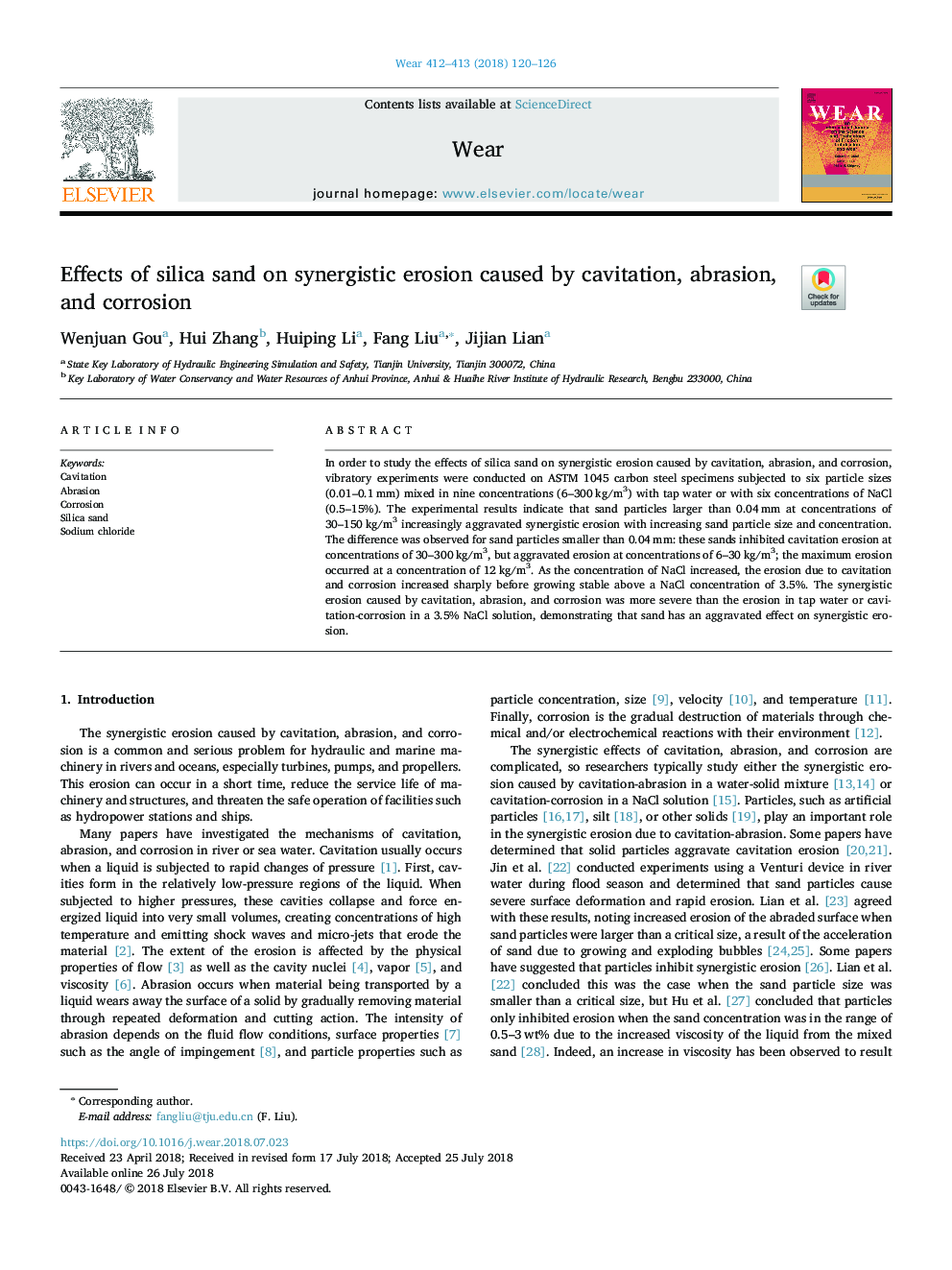| Article ID | Journal | Published Year | Pages | File Type |
|---|---|---|---|---|
| 7003713 | Wear | 2018 | 7 Pages |
Abstract
In order to study the effects of silica sand on synergistic erosion caused by cavitation, abrasion, and corrosion, vibratory experiments were conducted on ASTM 1045 carbon steel specimens subjected to six particle sizes (0.01-0.1â¯mm) mixed in nine concentrations (6-300â¯kg/m3) with tap water or with six concentrations of NaCl (0.5-15%). The experimental results indicate that sand particles larger than 0.04â¯mm at concentrations of 30-150â¯kg/m3 increasingly aggravated synergistic erosion with increasing sand particle size and concentration. The difference was observed for sand particles smaller than 0.04â¯mm: these sands inhibited cavitation erosion at concentrations of 30-300â¯kg/m3, but aggravated erosion at concentrations of 6-30â¯kg/m3; the maximum erosion occurred at a concentration of 12â¯kg/m3. As the concentration of NaCl increased, the erosion due to cavitation and corrosion increased sharply before growing stable above a NaCl concentration of 3.5%. The synergistic erosion caused by cavitation, abrasion, and corrosion was more severe than the erosion in tap water or cavitation-corrosion in a 3.5% NaCl solution, demonstrating that sand has an aggravated effect on synergistic erosion.
Related Topics
Physical Sciences and Engineering
Chemical Engineering
Colloid and Surface Chemistry
Authors
Wenjuan Gou, Hui Zhang, Huiping Li, Fang Liu, Jijian Lian,
